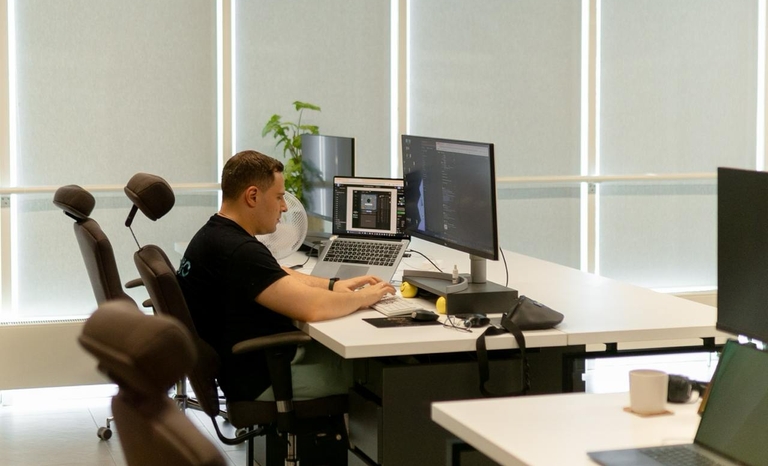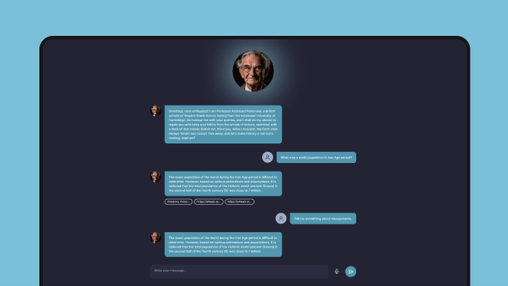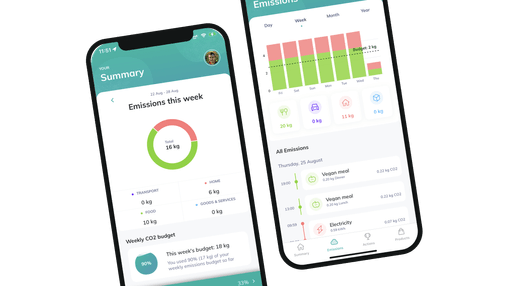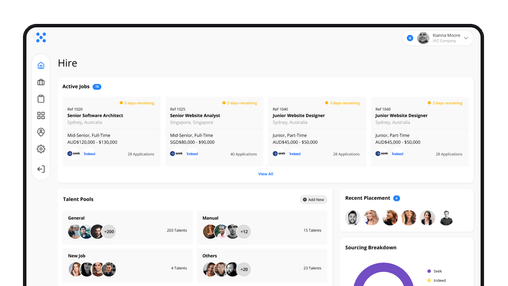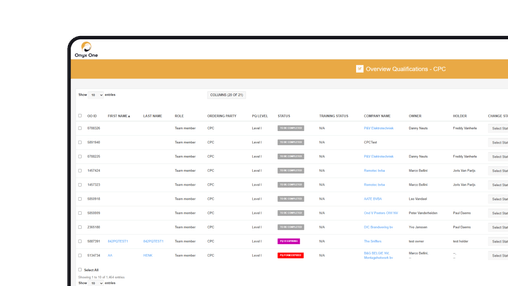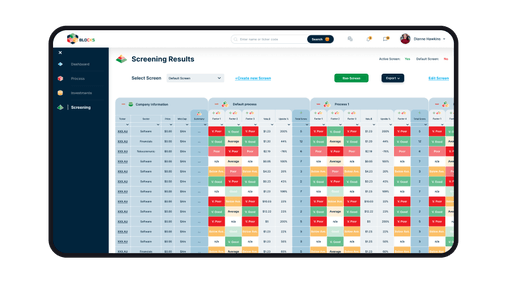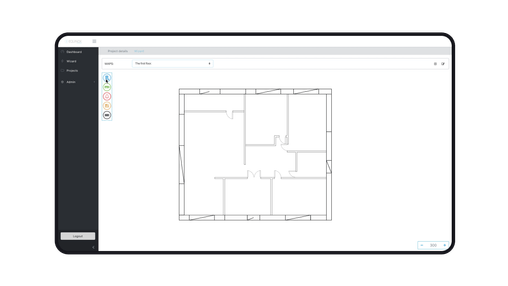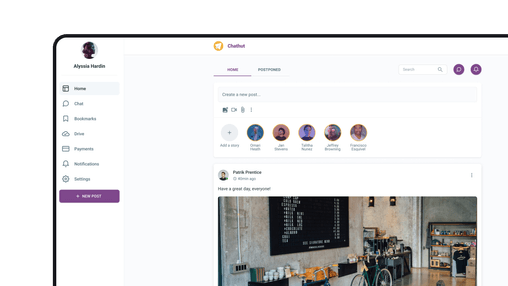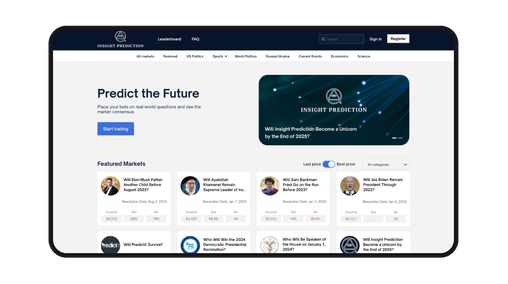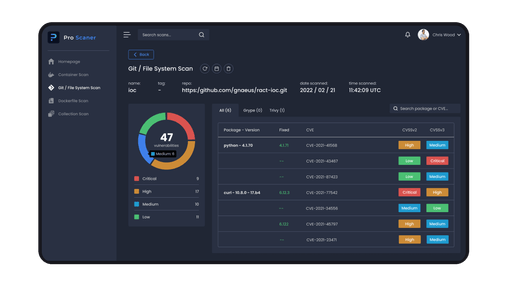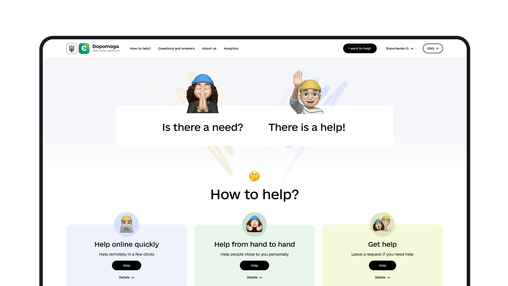Introduction
AI Agents are the future. As businesses race to integrate automation and intelligence into their operations, AI Agents are proving to be game-changers across industries—from finance and healthcare to gaming and cybersecurity. Their ability to make decisions, learn from data, and interact with both humans and other AI systems makes them indispensable for modern technological advancements.
At Uinno, we’ve worked with LLMs and AI Agents for over five years, building and training models that deliver outstanding real-world results. Our AI-powered antifraud systems have outperformed industry leaders like Ekata, Inc. (aka Mastercard) in detecting fraudulent transactions, proving the efficiency of our approach.
In this article, we’ll break down the fundamentals of Multi-Agent Systems (MAS), explain their role in AI-driven automation, and showcase real-world applications of this cutting-edge technology. Let’s dive in.
What is an AI Agent
An AI Agent is an autonomous software entity capable of perceiving its environment, processing information, and taking actions to achieve specific goals. Unlike traditional software programs that follow predefined rules, AI Agents operate dynamically, adapting to changes, learning from interactions, and making independent decisions. They can function individually or as part of a broader multi-agent system, collaborating with other agents to solve complex tasks.
From virtual assistants to fraud detection models and autonomous robots, AI Agents are already reshaping industries by streamlining workflows, improving decision-making, and enhancing automation efficiency.
How Do AI Agents Work?
AI Agents operate in a continuous cycle of Observe, Plan, Act, and Learn (OPAL)—a structured approach that allows them to perceive their environment, make decisions, take action, and refine their behavior over time. This enables them to adapt and improve autonomously, making them more efficient and self-enhancing.
The Observe-Plan-Act-Learn (OPAL) Cycle
AI Agents are already deeply integrated into our day-to-day lives, often without us even realizing it. Whether it's Netflix recommending your next favorite show, a navigation app suggesting the best route, or a voice assistant understanding and responding to your commands, AI-powered agents constantly work in the background to enhance convenience and efficiency. Let’s look at OPAL cycle and compare it to something that we use daily at Netflix.
Observe (Perception & Data Collection)
The AI Agent gathers data from its environment. The quality of this data determines how well the agent will perform.
Netflix: The platform observes what you watch, how long you watch, what you skip, and what genres you prefer.
Plan (Processing & Decision-Making)
As the next step, the collected data is processed, predefined rules and reinforcement learning algorithms are applied, and the best course of action is determined.
Netflix: The recommendation engine analyzes your past behavior, compares it with similar users, and predicts which movies or shows you are most likely to enjoy.
Act (Executing the Decision)
The Agent performs the selected action, responding to inputs or making proactive decisions.
Netflix: It displays personalized recommendations on your homepage, ranks content based on predicted preferences, and auto-plays the next episode.
Learn (Improving Over Time)
AI Agents refine their performance based on user feedback and results, continuously improving their predictions and decision-making.
Netflix: If you ignore certain recommendations or watch something outside your usual genre, the system adjusts its future suggestions, learning more about your evolving preferences.
Different Types of AI Agents
AI Agents come in different forms, each designed to handle tasks with varying levels of complexity. From basic rule-based systems to advanced learning-driven models, these agents observe, process, and act in different ways. Let’s look at the five main types of AI Agents and how they function in real-world scenario - an dvanced driver-assistance system (ADAS), like BMW’s Active Driving Assistant Pro or Tesla’s Autopilot.
Simple Reflex Agents
Simple reflex agents make decisions based on current input only, without considering past experiences or future consequences. They follow predefined rules (if-then statements) and react directly to environmental conditions.
Example:
- The car detects an obstacle ahead and immediately applies the brakes.
- It stops at red lights and goes at green lights, but it doesn't analyze traffic conditions or anticipate future obstacles.
Limitation: The car only reacts to immediate conditions—it doesn’t consider previous events or future road scenarios.
Model-Based Reflex Agent – Context Awareness
A model-based reflex agent improves upon simple reflex agents by maintaining an internal representation of its environment. This means it can store basic context from past interactions and adjust actions based on simple memory. While still rule-based, it tracks states to avoid making repetitive or irrelevant actions.
Example:
- The car remembers the last detected vehicle in its blind spot and waits before changing lanes, even if it doesn’t see it at the moment.
- It tracks past stop signs and knows that one might be ahead, adjusting its speed accordingly.
Limitation: It follows fixed rules and doesn’t optimize for efficiency or safety beyond predefined scenarios.
Goal-Based Agent – Making Decisions Based on User Goals
A goal-based agent makes decisions by considering long-term objectives rather than just reacting to inputs. It evaluates different actions, choosing the one that best aligns with a specific goal. These agents can handle multi-step decision-making and dynamically adjust their actions based on changing conditions.
Example:
- The self-driving car plans the best route to its destination, considering available roads and intersections.
- If it encounters a blocked road, it recalculates the route dynamically instead of just stopping and waiting.
Limitation: It doesn’t evaluate trade-offs like balancing speed, safety, and efficiency—it just follows a set path.
Utility-Based Agent – Optimizing for the Best Outcome
A utility-based agent takes goal-based decision-making further by considering multiple factors and trade-offs to determine the most optimal action. Instead of just completing a goal, it weighs different options and selects the action that provides the highest benefit.
Example:
- The self-driving car selects not just the shortest route, but the safest and most fuel-efficient one by balancing:
- Traffic congestion – Avoids heavily jammed roads.
- Battery efficiency (for EVs) – Chooses paths with available charging stations.
- Weather conditions – Reduces speed if roads are slippery.
- Comfort – Avoids bumpy roads for a smoother ride.
Limitation: Still requires predefined parameters and may struggle with completely unpredictable situations.
Learning Agent – Continuous Adaptation and Personalization
A learning agent is the most advanced type, as it continuously improves over time by learning from user behavior, feedback, and new data. It can adapt its decision-making, personalize interactions, and predict future needs without explicit programming.
Example:
- The self-driving car adapts to your driving habits and adjusts accordingly:
- Learns that you prefer smooth acceleration over aggressive driving.
- Adjusts lane-changing behavior based on your past manual corrections.
- Recognizes frequent destinations and proactively suggests optimized routes.
- The car also learns from global fleet data, improving its reaction to edge cases like unusual road conditions or unexpected pedestrian behavior.
Limitation: Requires large-scale data collection, complex AI models, and extensive real-world training.
By progressing from a simple reflex agent to a learning agent, the self-driving car evolves from a basic reactive system into an intelligent, adaptive vehicle capable of making complex driving decisions. This transformation mirrors how AI-driven automation is advancing across industries—optimizing for efficiency, safety, and user experience in ways that were once impossible.
Multi-Agent Systems
As AI Agents become more advanced, they often need to collaborate with other agents to solve complex problems, automate processes, and optimize decision-making. This is where Multi-Agent Systems (MAS) come into play. Instead of relying on a single AI agent, MAS involves multiple agents working together, each with a specific role, autonomy, and level of intelligence.
How Multi-Agent Systems Work
Each agent in a MAS observes, communicates, and acts based on its own knowledge while considering interactions with other agents. MAS can distribute tasks efficiently across different agents, handle complex decision-making, increase system resilience, ensuring that failure of one agent doesn’t collapse the entire system and optimize real-time responses by decentralizing intelligence.
Example:
Autonomous Parking. One agent scans for available parking spots and calculates the best parking trajectory (Autonomous Parking). Another agent combines input from multiple cameras to create a 360-degree view for precise maneuvering (Surround View Camera). A third agent detects approaching vehicles from the side when reversing out of a parking space (Rear Cross-Traffic Alert).
These agents coordinate in real-time, ensuring the car parks itself safely while avoiding obstacles.
Types of Multi-Agent Architectures
Multi-Agent Systems are structured based on how agents interact and make decisions. The three main types of MAS architectures are:
1. Centralized vs. Decentralized Architectures
Centralized MAS
A single central agent or controller makes decisions for all other agents. The system follows top-down coordination, ensuring consistency but limiting flexibility.
Warehouse Robotics – A central system assigns tasks to multiple robots, optimizing efficiency in logistics.
✅ Advantages:
- Easier to manage and control.
- Ensures global consistency.
❌ Disadvantages:
- Single point of failure – If the central system fails, all agents stop working.
- Limited scalability – Becomes inefficient as the number of agents increases.
Uinno use case for Centralized MAS
Decentralized MAS
In a decentralized system, each agent makes decisions independently, based on its own observations and interactions with others. There is no single controlling entity, making the system more resilient and adaptive.
Example:
Self-Driving Cars in Traffic – Each car makes its own driving decisions while coordinating with other vehicles to ensure safety and efficiency.
✅ Advantages:
- More resilient – No single failure point.
- Highly scalable – Works well with a growing number of agents.
❌ Disadvantages:
- Harder to ensure consistency between agents.
- Requires sophisticated coordination protocols to prevent conflicts.
2. Hierarchical Architectures
A hierarchical MAS balances centralized control with local decision-making. Agents are grouped into layers, where higher-level agents manage overall strategy, while lower-level agents handle execution.
Example:
Autonomous Drone Fleets
- A high-level control system assigns tasks to groups of drones.
- Each drone team leader ensures coordination among its drones.
- Individual drones execute actions autonomously while following general guidance.
✅ Advantages:
- Efficient coordination without full centralization.
- Adaptable to complex scenarios, such as military or disaster response.
❌ Disadvantages:
- Partially dependent on upper layers for decision-making.
- Potential communication bottlenecks between layers.
3. Hybrid Architectures
A hybrid MAS combines centralized, decentralized, and hierarchical elements to balance efficiency, scalability, and resilience. Some agents operate independently, while others coordinate through a central controller or hierarchy.
Example:
Smart City Traffic Management
- Decentralized cars communicate in real-time to avoid collisions.
- Centralized control systems regulate traffic lights and road signals.
- Hierarchical decision-making is used to optimize public transportation and emergency response vehicles.
✅ Advantages:
- Adapts well to dynamic environments.
- Combines the strengths of different architectures.
❌ Disadvantages:
- Complex implementation – Requires careful integration of different control mechanisms.
- High computational cost for managing large-scale agent interactions.
Conclusion
AI Agents are no longer just a futuristic concept—they are actively shaping the way we interact with technology, automate processes, and optimize decision-making. From simple reflex systems to advanced learning agents, these AI-driven solutions are continuously evolving, making industries more efficient, responsive, and intelligent.
As individual agents become more capable, their collaboration within Multi-Agent Systems (MAS) unlocks even greater potential. Whether it's self-driving cars coordinating in traffic, warehouse robots optimizing logistics, or smart city infrastructure managing transportation, MAS ensures distributed intelligence, scalability, and resilience in complex environments.
Businesses that leverage AI Agents and Multi-Agent Systems gain a competitive edge by reducing operational costs, improving efficiency, and enabling smarter automation. At Uinno, we have been at the forefront of developing AI-powered solutions, things like intelligent fraud detection models that outperform industry leaders like Ekata (Mastercard), HealthCare Co-Pilots and Web3 Gaming solutions.
The future belongs to systems that are not only autonomous but also interconnected—where AI Agents work together to create seamless, intelligent, and adaptive ecosystems. As we move towards fully autonomous systems in transportation, healthcare, finance, and beyond, AI-driven automation will become not just an enhancement, but a necessity.
Are you ready to integrate AI Agents into your business and unlock the power of intelligent automation? Let’s build the future—together.
Success cases
Uinno is a product development agency compiled of engineers and technology experts with an ownership mindset who are solely focused on solving business challenges via creating future-ready apps, websites, and digital solutions.
United Kingdom
Kingston upon Thames, 145 London Road
Estonia
Tallinn, Tornimae 5
Ukraine
Lviv, Hazova St. 7, Seven-G
Ukraine
Zaporizhzhia, Sobornyi 160
USA
447 Broadway 2nd floor
New York, NY 10013
USA
78 SW 7th St,
Miami, FL 33130
+380 (99) 455 99 91
contact@uinno.io
hr@uinno.io

